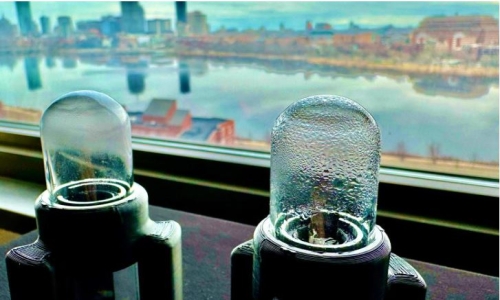


 7:46:8
7:46:8  2019-11-18
2019-11-18  1832
1832

When your child starts child care, preschool, kinder or school, you and your child could start packing healthy lunches together, full of nutritious foods from home. Here are some tasty and healthy lunch ideas to keep your child going through the day.
Packing healthy lunches for your child’s day
A healthy lunch box full of fresh food gives your child the energy to concentrate, learn and play all day.
How much you put in your child’s lunch box depends on the length of your child’s day.
For example, children who go to child care, kinder or school for six hours a day might need to bring food for morning tea and lunch. Children who go for longer periods might also need afternoon tea.
It’s also a good idea to pack a bottle with tap water for your child to drink. Fruit juice and soft drinks are high in sugar and aren’t recommended for children because they can lead to tooth decay and other health problems.
Healthy lunch ideas
Packing a lunch box from home means you can offer your child a range of healthy lunch options from the five food groups:
Here are some healthy lunch ideas for getting the five food groups into your child’s lunch box:
If your child won’t eat anything but white bread, try a high fibre, low-GI loaf. These are more nutritious than white bread and will stop your child from getting hungry again too quickly after lunch.
Healthy snack options
Fresh fruit, stewed fruit in natural juice, dried fruit, muesli, yoghurt, pieces of cheese, fruit bread, rice cakes, pikelets and wholegrain crackers all make nutritious snacks.
You could also try making your own healthy muffins or cakes using vegetables or fruit – for example, sultanas, carrot, banana, pumpkin or zucchini.
Sweet cakes are best kept for special occasions such as birthdays.
Sandwich, flat bread and pita bread fillings
Unusual and interesting fillings can get your child excited about her sandwich, so why not be a little adventurous?
For example, you could try flat or pita bread with chopped carrot, celery, capsicum, snow peas or cucumber. What about cherry tomatoes, corn, beetroot or sprouts with dips? Or add grated carrot, zucchini, sliced red cabbage, raisins or sultanas, sliced apple or fresh herbs to liven things up.
Here are more tasty sandwich combinations:
Foods to keep out of lunch boxes
Meats such as salami, mortadella, Strasburg, smoked turkey and pastrami are highly processed and salty. They can also be fatty. You might want to save these for every now and then, rather than packing them every day.
Check the ‘allowable’ foods policy at your child’s centre, kinder or school. Many centres and schools ask that you don’t pack certain foods – for example, eggs or anything with nuts. This is to protect children with allergies from coming into contact with those foods.
Getting kids to eat their lunch
Kids usually want to eat quickly so that they can go and play. Here are some ideas to make it easy for them.
Keep it simple
Choose foods that are simple and easy to eat. Some children might not want to spend time on fiddly packaging or don’t like getting their hands sticky.
Make sure that containers seal well but can be opened easily – do a test at home. It might be that your child isn’t eating lunch because it’s hard to get at!
Keep it small and easy to handle
Minimise mess
If there’s no other choice, your child is more likely to eat the healthy food you’ve packed. So avoid putting in ‘sometimes foods’ such as sweet treats – for example, muesli bars or fruit bars such as roll-ups – and salty or fatty treats – for example, packets of chips.
These foods aren’t recommended for every day, because they’re low in nutrition and high in calories. Save these foods for special occasions, such as birthdays.
Keeping food fresh and safe
Before preparing your child’s lunch box, always wash your hands well with warm soapy water. Make sure all chopping boards and utensils are clean and dry.
Any lunch box containing meat, fish, chicken, eggs, noodles, rice, pasta, yoghurt, cheese or milk needs to be kept cold, so choose an insulated lunch box or one that can fit a freezer pack or small bottle of frozen water. This will stop the growth of harmful bacteria, which could make your child sick.
Also make sure to check the use-by date for items like yoghurt and milk.
If you make your child’s lunch the night before, keep it in the fridge (below 5°C) overnight. In the morning, add a bottle of frozen water to the lunch box to keep it cool until lunch time.
If you’re packing a warm food such as soup, heat it up in the morning and pack in a thermos – it will still be warm at lunchtime. Add a wholemeal bread roll for extra fibre. Some schools have microwaves for children to heat their lunch, so check whether your school has one.
Reality Of Islam |
|

If you'

Imagine bei

MIT en
 9:3:43
9:3:43
 2018-11-05
2018-11-05
10 benefits of Marriage in Islam
 7:5:22
7:5:22
 2019-04-08
2019-04-08
benefits of reciting surat yunus, hud &
 9:45:7
9:45:7
 2018-12-24
2018-12-24
advantages & disadvantages of divorce
 11:35:12
11:35:12
 2018-06-10
2018-06-10
 6:0:51
6:0:51
 2018-10-16
2018-10-16
 2:42:26
2:42:26
 2023-02-02
2023-02-02
 6:28:21
6:28:21
 2022-12-20
2022-12-20
 10:55:53
10:55:53
 2022-06-13
2022-06-13
 12:10:56
12:10:56
 2022-11-17
2022-11-17
 6:0:8
6:0:8
 2023-03-19
2023-03-19
allah will not answer all your prayers
 6:56:28
6:56:28
 2022-01-01
2022-01-01
 7:6:7
7:6:7
 2022-03-21
2022-03-21
 5:41:46
5:41:46
 2023-03-18
2023-03-18
| LATEST |